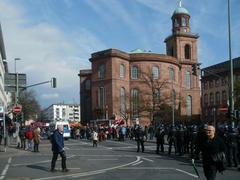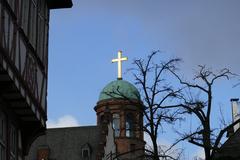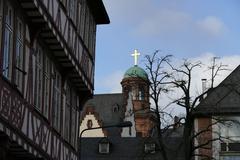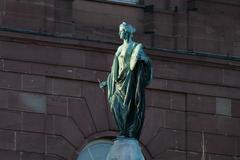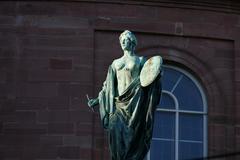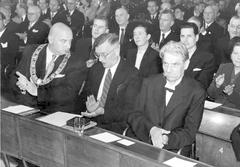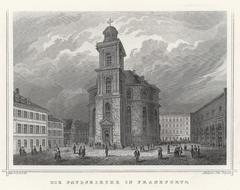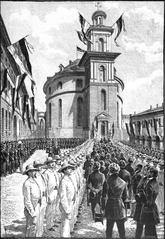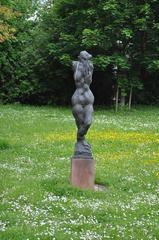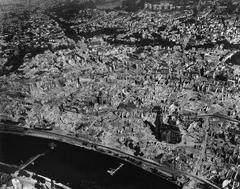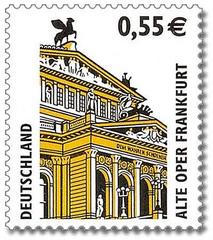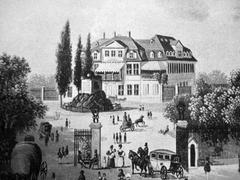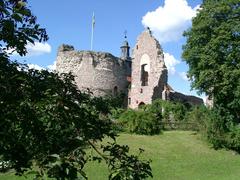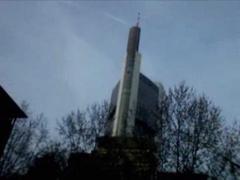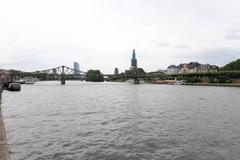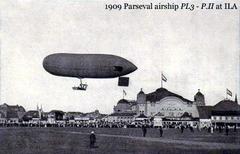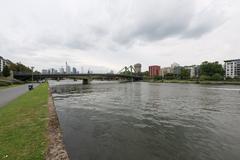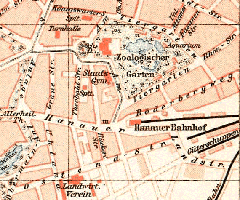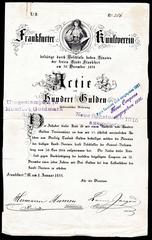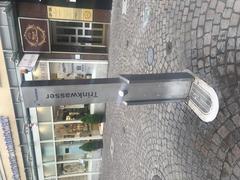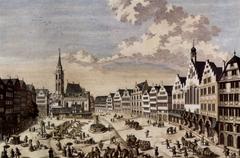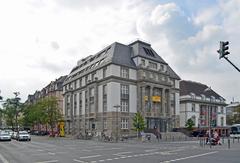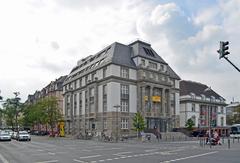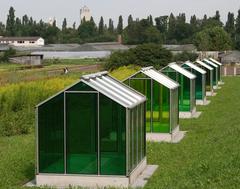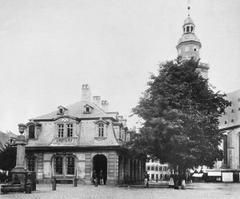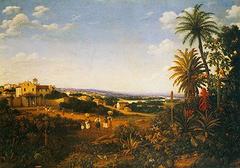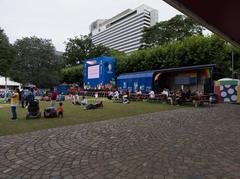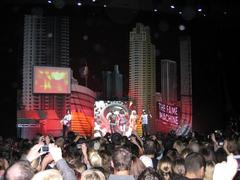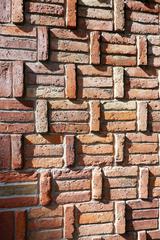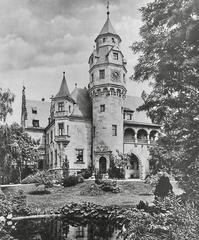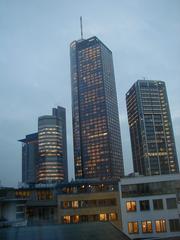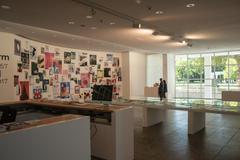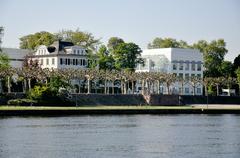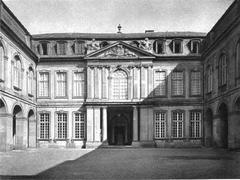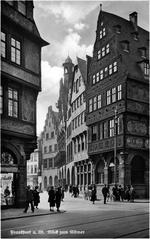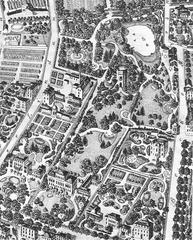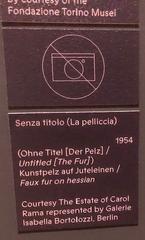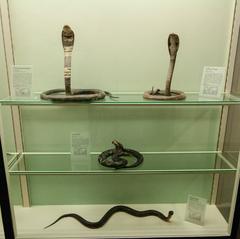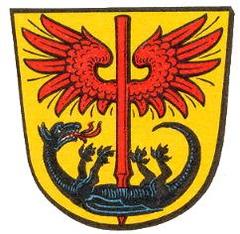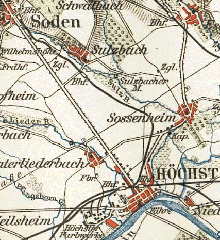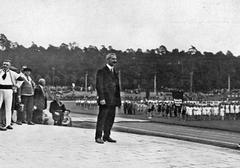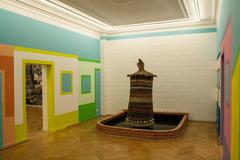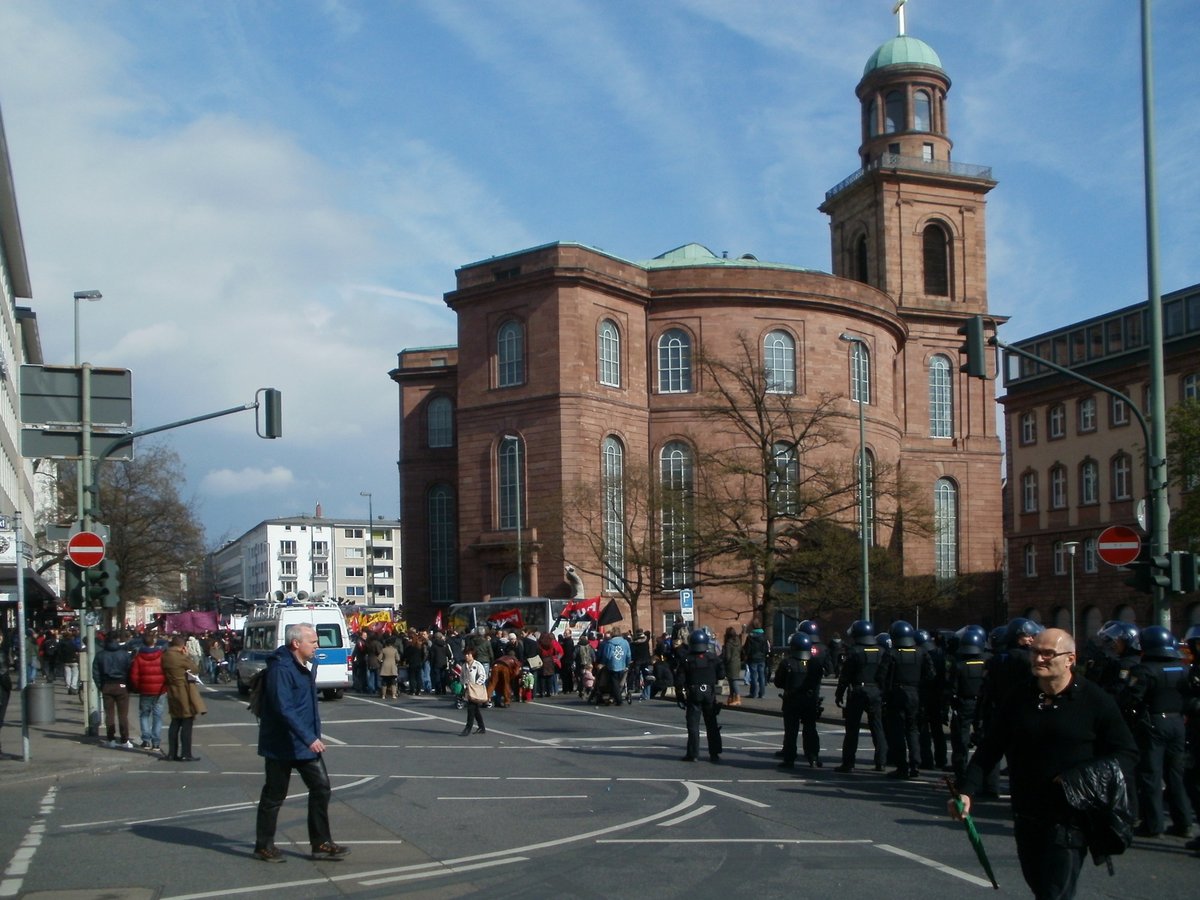
Paulskirche Visiting Hours, Tickets, and Historical Insights
Date: 23/07/2024
Introduction
Paulskirche, or St. Paul’s Church, in Frankfurt am Main, Germany, is not only a historical site but also a monument to German democracy. Its significance extends from its early beginnings, through the German Revolution of 1848, and into its modern role as a symbol of unity and democratic values. Constructed between 1789 and 1833, Paulskirche initially served as a Lutheran church designed in a neoclassical style by architect Johann Andreas Liebhardt (Frankfurt Tourism). However, its most notable moment came during the German Revolution of 1848-1849 when it hosted the Frankfurt Parliament, the first freely elected German legislative body. This event symbolized the struggle for a unified and democratic Germany and cemented Paulskirche’s status as a beacon of freedom and democracy (Deutsche Welle).
Despite suffering extensive damage during World War II, Paulskirche was meticulously reconstructed between 1947 and 1948, preserving its architectural and historical integrity. Today, it serves as a venue for cultural and political events, including the prestigious Peace Prize of the German Book Trade, and houses exhibitions that educate visitors about its rich history and the broader context of German democracy (Peace Prize of the German Book Trade). Visitors to Paulskirche will find a blend of historical insights, architectural beauty, and cultural significance, making it a must-visit destination in Frankfurt.
Table of Contents
- [Introduction](#introductionintroduction)
- [Early Beginnings and Construction](#early-beginnings-and-constructionearly-beginnings-and-construction)
- [Role in the German Revolution of 1848](#role-in-the-german-revolution-of-1848role-in-the-german-revolution-of-1848)
- [Post-Revolutionary Period and Decline](#post-revolutionary-period-and-declinepost-revolutionary-period-and-decline)
- [Destruction and Reconstruction](#destruction-and-reconstructiondestruction-and-reconstruction)
- [Modern Significance and Usage](#modern-significance-and-usagemodern-significance-and-usage)
- [Visitor Information](#visitor-informationvisitor-information)
- [Visiting Hours](#visiting-hoursvisiting-hours)
- [Tickets](#ticketstickets)
- [Travel Tips](#travel-tipstravel-tips)
- [Nearby Attractions](#nearby-attractionsnearby-attractions)
- [Accessibility](#accessibilityaccessibility)
- [Architectural Features and Preservation](#architectural-features-and-preservationarchitectural-features-and-preservation)
- [FAQ](#faqfaq)
- [Conclusion](#conclusionconclusion)
Early Beginnings and Construction
Paulskirche, or St. Paul’s Church, is a historically significant building located in Frankfurt am Main, Germany. The church’s construction began in 1789 and was completed in 1833. It was originally built as a Lutheran church, designed in a neoclassical style by architect Johann Andreas Liebhardt. The church’s oval shape and its large, central dome are distinctive features that set it apart from other ecclesiastical buildings of the time. The construction process was lengthy, taking over four decades to complete, primarily due to financial constraints and the Napoleonic Wars.
Role in the German Revolution of 1848
Paulskirche is most renowned for its pivotal role during the German Revolution of 1848-1849. It served as the meeting place for the Frankfurt Parliament, the first freely elected parliament for all of Germany. The parliament convened in Paulskirche on May 18, 1848, with the goal of creating a unified German state and drafting a constitution. This event marked a significant moment in German history, as it represented the first attempt to establish a democratic government in Germany.
The Frankfurt Parliament, also known as the National Assembly, consisted of 586 delegates from various German states. Despite their efforts, the parliament faced numerous challenges, including internal divisions and opposition from conservative forces. Ultimately, the assembly’s proposed constitution was rejected by the Prussian king, leading to the dissolution of the parliament in 1849. Nevertheless, the events that took place in Paulskirche laid the groundwork for future democratic movements in Germany.
Post-Revolutionary Period and Decline
Following the dissolution of the Frankfurt Parliament, Paulskirche returned to its original function as a place of worship. However, its significance as a symbol of German unity and democracy remained. In the late 19th and early 20th centuries, the church continued to be a site for important political and cultural events. For instance, in 1913, the centenary of the Battle of Leipzig was commemorated in Paulskirche, highlighting its ongoing role in German national consciousness.
Destruction and Reconstruction
Paulskirche suffered extensive damage during World War II. On March 18, 1944, an Allied bombing raid on Frankfurt resulted in the near-total destruction of the church. The bombing left only the outer walls standing, and the interior was completely gutted. The devastation of Paulskirche was a significant loss, given its historical and cultural importance.
In the post-war period, the decision was made to rebuild Paulskirche as a symbol of Germany’s commitment to democracy and peace. The reconstruction process began in 1947 and was completed in 1948, in time for the centenary of the Frankfurt Parliament. The rebuilt church was not restored to its original function as a place of worship; instead, it was repurposed as a memorial site and a venue for political and cultural events. The reconstruction aimed to preserve the historical significance of Paulskirche while adapting it to its new role in post-war Germany.
Modern Significance and Usage
Today, Paulskirche stands as a monument to German democracy and unity. It is no longer used for religious services but serves as a venue for various events, including award ceremonies, exhibitions, and public lectures. One of the most notable events held at Paulskirche is the annual awarding of the Peace Prize of the German Book Trade, which takes place during the Frankfurt Book Fair. This prestigious award recognizes individuals who have made significant contributions to the promotion of peace, humanity, and understanding among peoples.
Paulskirche also houses a permanent exhibition on the history of the Frankfurt Parliament and the democratic movement in Germany. The exhibition provides visitors with an in-depth look at the events of 1848-1849 and the broader context of German political history. Through its various functions, Paulskirche continues to serve as a reminder of the ongoing struggle for democracy and human rights.
Visitor Information
Visiting Hours
Paulskirche is open to the public daily from 10 AM to 5 PM. It is advisable to check the official website for any changes in visiting hours due to special events or holidays.
Tickets
Entry to Paulskirche is free of charge. However, certain exhibitions or events may require a ticket, which can be purchased at the entrance or online.
Travel Tips
Paulskirche is centrally located in Frankfurt and is easily accessible by public transportation. The nearest subway station is Dom/Römer, which is just a short walk away.
Nearby Attractions
While visiting Paulskirche, consider exploring other nearby historical sites such as the Römer, Frankfurt Cathedral, and Goethe House. These attractions provide a comprehensive view of Frankfurt’s rich history and culture.
Accessibility
Paulskirche is accessible to visitors with disabilities. There are ramps and elevators available to ensure that everyone can enjoy the site’s historical and cultural offerings.
Architectural Features and Preservation
The architectural design of Paulskirche is notable for its simplicity and elegance. The church’s oval shape and central dome create a sense of openness and light, which is enhanced by the large windows that line the walls. The interior of the church is relatively plain, reflecting the neoclassical style that was popular at the time of its construction. Despite the extensive damage it suffered during World War II, the reconstruction efforts aimed to preserve the original architectural features as much as possible.
In recent years, efforts have been made to ensure the preservation and maintenance of Paulskirche. The building is protected as a cultural heritage site, and regular restoration work is carried out to address any structural issues and to preserve its historical integrity. These efforts are crucial in maintaining Paulskirche as a symbol of German history and democracy for future generations.
FAQ
Q: What are the visiting hours for Paulskirche?
A: Paulskirche is open daily from 10 AM to 5 PM. It is advisable to check the official website for any changes in visiting hours due to special events or holidays.
Q: How much are tickets to Paulskirche?
A: Entry to Paulskirche is free of charge. However, certain exhibitions or events may require a ticket, which can be purchased at the entrance or online.
Q: Is Paulskirche accessible to visitors with disabilities?
A: Yes, Paulskirche is accessible to visitors with disabilities. There are ramps and elevators available to ensure that everyone can enjoy the site’s historical and cultural offerings.
Conclusion
Paulskirche’s rich history and its role in the German democratic movement make it a significant landmark in Frankfurt am Main. From its construction in the late 18th century to its pivotal role in the 1848 revolution, and its subsequent destruction and reconstruction, Paulskirche embodies the resilience and enduring spirit of the German people. Today, it stands as a testament to the importance of democracy and the ongoing struggle for human rights and unity. Visitors to Paulskirche can explore its historical significance through exhibitions and events, making it a must-visit destination for those interested in German history and culture. Plan your visit today to immerse yourself in the rich history and cultural heritage of Frankfurt (Paulskirche Official Website).
References
- Paulskirche, Frankfurt - History, Visiting Hours, and Ticket Information (Frankfurt Tourism)
- Paulskirche in Frankfurt - Visiting Hours, Tickets, and Historical Significance (Deutsche Welle)
- Your Ultimate Guide to Visiting Paulskirche - Hours, Tickets, and Tips (Peace Prize of the German Book Trade)
